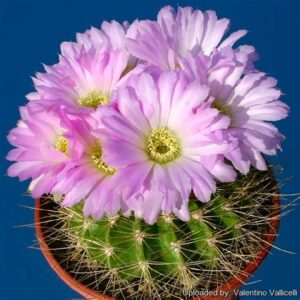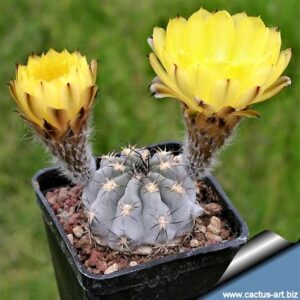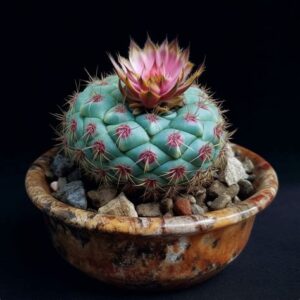The Acanthocalycium violaceum, a strikingly enchanting species of cactus, captures the imagination with its distinct aesthetic and singular cultivation needs. Aptly known as the violet cactus, it boasts captivating colors and intriguing forms, making it a favorite among succulent enthusiasts. However, understanding the hardiness zone best suited for this remarkable plant is vital for ensuring its vigor and long-term prosperity.
Hardiness zones, as classified by the USDA, provide crucial information about the temperature tolerance of various plants. These zones range from 1 (the coldest) to 13 (the warmest), indicating the minimum winter temperatures that specific plants can endure. For Acanthocalycium violaceum, comprehension of its native environment reveals that it thrives best in zones where conditions closely mimic those of its original habitat.
The native habitat of Acanthocalycium violaceum, primarily found in Argentina, reveals much about its climatic preferences. This region experiences a semi-arid climate with seasonal temperature variations. Understanding these conditions will assist potential cultivators in determining the geographical zones suitable for favorable growth.
When we examine the recommended hardiness zones for Acanthocalycium violaceum, it is predominantly rated for zones 9 through 11. Let’s embark on an exploration through these zones to comprehend why this succulent species favors them.
In the warmer regions of hardiness zone 9, minimum temperatures rarely dip below 20°F (-6°C). This temperature range allows Acanthocalycium violaceum to flourish. The moderate climate, along with well-drained soils that often characterize this zone, creates an environment conducive to its growth. Additionally, the abundant sunlight available in zone 9 enhances the plant’s ability to photosynthesize, providing the energy necessary for robust growth and vibrant blooms.
In hardiness zone 10, where minimum winter temperatures rarely fall below 30°F (-1°C), Acanthocalycium violaceum continues to thrive. Cultivators in this zone witness a longer growing season complemented by relatively mild winters. This allows for more extended periods of blooming, providing an effusion of color to gardens that display this enchanting cactus. Its tolerance to heat during the summer months in zone 10 enables the plant to retain its aesthetic appeal without sacrificing health, as long as moisture and drainage are adequately managed.
Beyond zone 10, we find zone 11, where temperatures seldom drop below 40°F (4°C). Here, Acanthocalycium violaceum finds a veritable paradise. The ongoing warmth provided by this particular zone ensures that the plant can remain evergreen throughout the year. In addition, adequate irrigation practices facilitate a peak growing environment. However, while Acanthocalycium violaceum can endure the subtropical conditions of zone 11, it is crucial to maintain a balance. Excessive humidity or moisture can pose serious threats like root rot, which can be detrimental to the plant’s health.
Moreover, aspiration plays a critical role in the aesthetic appeal of Acanthocalycium violaceum. The plant’s distinctive cylindrical shape is often adorned with vibrant purple spines that create a striking contrast against its more muted green body. This unique physical characteristic gives it an artistic quality that resonates deeply within succulent collections and gardens alike. Understanding the requirements of the hardiness zones allows enthusiasts to orchestrate settings where these visual attributes can be best showcased.
While Acanthocalycium violaceum is best positioned within zones 9 to 11, enthusiasts in colder regions may still cultivate this lovely specimen. Employing proper care measures, such as bringing the plants indoors during harsh winters or utilizing protective coverings outdoors, can allow successful cultivation even in zones as chilly as 7 and 8. However, these actions can complicate the growing process, often requiring heightened vigilance for external conditions.
The delicate balance of temperature and care that Acanthocalycium violaceum requires creates a unique challenge that many find intriguing. This captivating cactus demands a deft hand while rewarding cultivators with its extraordinary beauty. The striking nature of its blooms, which span from mid-spring to summer, adds to its fascination. When healthy, it produces an abundance of blossoms in shades of pink or purple, enveloping the cactus in a surreal ambiance that captivates observers.
Acanthocalycium violaceum is not merely a plant; it is a testament to nature’s artistry. Its branching formations contribute to a visually stimulating aspect, allowing for captivating displays in any setting. For avid gardeners looking to enhance their gardens with an opulent structure, the Acanthocalycium violaceum serves as an ideal option, especially when positioned in areas with optimal light exposure and suitable temperatures.
Amid discussions of hardiness zones, one must also acknowledge the importance of soil composition. Acanthocalycium violaceum thrives in sandy, well-draining substrates that mirror its natural habitat. The integration of grit or perlite within the soil mixture can significantly enhance drainage, providing an optimal environment for the roots to develop and preventing moisture-related diseases.
In conclusion, Acanthocalycium violaceum emerges as a remarkable cactus deserving of attention. Its established range within hardiness zones 9 to 11 unveils guidelines for potential cultivators. Yet, its visual extravagance and unique characteristics extend beyond its climatic requirements, welcoming growers from diverse climates to indulge in the artistry and intrigue of this spectacular plant. Understanding these multifaceted elements allows enthusiasts to appreciate the beauty of Acanthocalycium violaceum, while also granting insight into the many layers that contribute to its maintenance and appeal. By fostering the right conditions, this cactus can undoubtedly thrive, capturing the hearts of those who venture to cultivate it in their gardens.





Leave a Comment